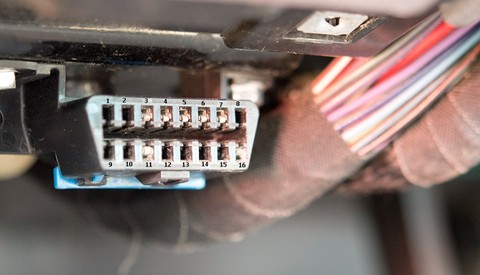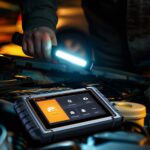Navigating the world of car diagnostics can be confusing, especially when you encounter terms like OBD1 and OBD2. A common question for car owners is: “Will an OBD2 scanner work on an OBD1 vehicle?” This article will clarify the differences between these systems and answer this crucial compatibility question.
To understand if an OBD2 scanner will work on an OBD1 vehicle, it’s essential to first grasp what these terms mean. OBD stands for On-Board Diagnostics, and these systems are essentially your car’s way of communicating about its health and performance. OBD1 was the earlier version, used in vehicles typically manufactured before the mid-1990s, although some models continued using it later. OBD2 is the more standardized and advanced system that became mandatory in the USA in 1996 and gradually adopted worldwide.
Key Differences Between OBD1 and OBD2 Systems
OBD1 systems were manufacturer-specific, meaning each car maker often had their own connectors, diagnostic codes, and communication protocols. This lack of standardization made diagnosing issues complex and required specialized tools for each brand. In contrast, OBD2 was designed to be a universal standard. It features a standardized 16-pin diagnostic port and a set of common diagnostic trouble codes across all makes and models. This standardization simplifies vehicle diagnostics and allows for the use of generic scan tools.
Why OBD2 Scanners Are Incompatible with OBD1 Vehicles
The short answer to the question “Will an OBD2 scanner work on an OBD1 vehicle?” is generally no. OBD2 scanners are designed to communicate using the specific protocols and communication methods established under the OBD2 standard. OBD1 systems, with their varied and manufacturer-specific protocols, are fundamentally different. An OBD2 scanner simply won’t understand or be able to interface with the diagnostic language of an OBD1 system.
While you might find adapters that physically connect an OBD2 scanner to an OBD1 port, these adapters are misleading. They only change the connector shape, not the underlying communication protocol. Using an adapter does not make an OBD1 vehicle OBD2 compatible. The OBD2 scanner will still be attempting to communicate using OBD2 protocols, which the OBD1 system will not recognize.
Identifying Your Vehicle’s OBD System
Determining whether your vehicle uses OBD1 or OBD2 is crucial before attempting any diagnostic scanning. Here are a few ways to identify your system:
- Vehicle Year: As a general guideline, vehicles manufactured in 1996 or later are typically OBD2. Vehicles older than the mid-1990s are usually OBD1. However, there are exceptions, and some manufacturers implemented OBD2 earlier.
- Check the Diagnostic Port: OBD2 ports are standardized 16-pin connectors, usually located under the dashboard on the driver’s side. OBD1 port locations and shapes varied widely and could be found under the dash or even in the engine bay.
- Consult Your Vehicle’s Manual: The owner’s manual should provide information about your vehicle’s diagnostic system.
Choosing the Correct Scan Tool for OBD1
For diagnosing OBD1 vehicles, you need a scan tool specifically designed to be compatible with OBD1 protocols. These tools are often referred to as OBD1 scanners or professional-grade scan tools with OBD1 capabilities. It’s worth noting that many high-quality scan tools that are compatible with OBD1 are also backward compatible with OBD2, offering versatility for working on a range of vehicles.
Conclusion: OBD2 Scanners and OBD1 Vehicles – A Mismatch
In conclusion, an OBD2 scanner will not work on an OBD1 vehicle due to fundamental differences in communication protocols and system design. While adapters might physically connect the devices, they do not bridge the communication gap. To diagnose OBD1 vehicles, you require a scan tool specifically designed for OBD1 systems. Always verify your vehicle’s OBD system before purchasing or using any diagnostic tools to ensure compatibility and avoid frustration. Understanding these distinctions is essential for effective car diagnostics and maintenance.

